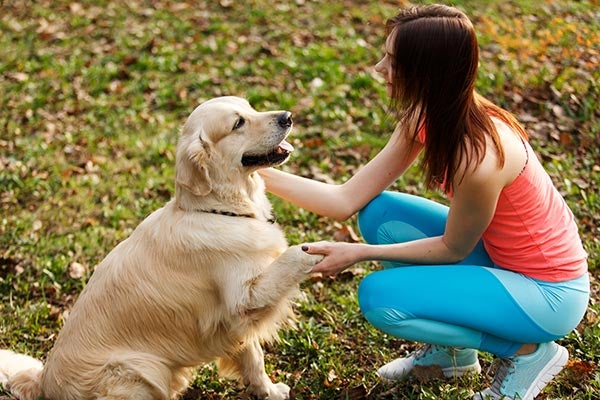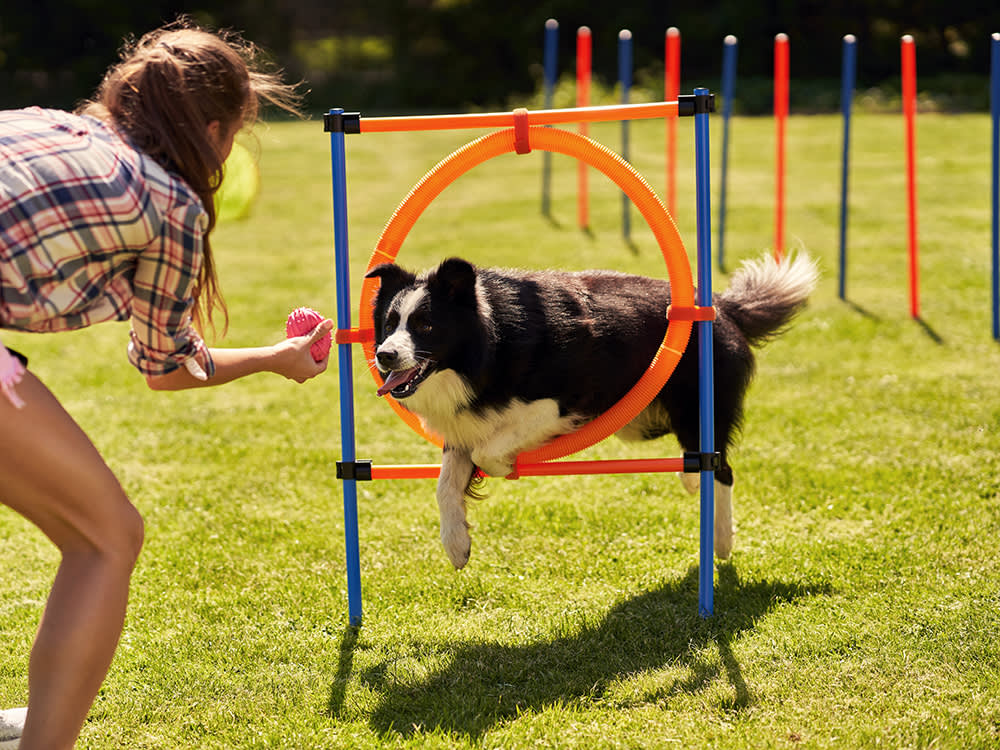Leading Pet Educating Tips for a Well-Behaved Companion
Training your pet to be a well-behaved buddy calls for a nuanced understanding of canine behavior and the application of reliable strategies. Important commands such as "Sit," "Remain," and "Come" work as the foundation for excellent manners, while favorable reinforcement techniques can significantly enhance understanding. In addition, developing a constant regular and prioritizing early socializing are essential parts that add to a harmonious connection. Nevertheless, the journey to a genteel family pet includes greater than simply these fundamentals; it requires a much deeper exploration of techniques that can change your training technique.
Comprehending Dog Habits
Understanding canine actions is vital for efficient canine training and promoting a harmonious partnership between pet dogs and their owners. Pets are intricate creatures, showing a large range of behaviors influenced by genes, setting, and socializing. Identifying the underlying motivations for a dog's actions-- such as fear, exhilaration, or territorial impulses-- can substantially boost training effectiveness.
Observing body movement is an important element of understanding canine behavior. Tail placement, ear alignment, and pose can supply beneficial insights into a pet's mood. A wagging tail does not constantly indicate joy; it can also indicate frustration or anxiousness. Moreover, social interactions with other pet dogs and human beings play an essential role fit behavior. Pets that experience positive socialization are generally more versatile and genteel.

Vital Training Commands
Grasping important training commands is crucial for establishing effective communication in between dogs and their owners. These commands work as the foundation for a well-behaved dog and can dramatically improve the overall connection between family pet and owner.
Secret commands include "Sit," "Remain," "Come," "Down," and "Heel." The command "Sit" is frequently the initial shown, as it encourages peace and focus. "Keep" enhances a pet dog's capability to stay in one position, promoting self-constraint. "Come" is vital for security, ensuring that your pet go back to you when called. "Down" instructs your pet dog to rest, which can help in managing ecstatic behavior. Dog training near me. "Heel" teaches your pet to stroll along with you, promoting better chain good manners.
Consistency and clearness in command delivery are important. Each command needs to be combined with a particular hand signal or motion to strengthen understanding. Exercising these commands in different environments aids canines generalise their training and respond suitably, regardless of disturbances. By investing time in educating these necessary commands, owners can grow a harmonious and official site respectful relationship with their canine buddies, enhancing both security and enjoyment in daily communications.
Positive Support Techniques
Favorable support techniques are necessary strategies in pet training that focus on fulfilling desired behaviors to motivate their recurrence. This strategy leverages the natural understanding processes of pet dogs, allowing them to associate particular activities with favorable outcomes. By utilizing treats, praise, or play as rewards, instructors can efficiently encourage canines to duplicate the actions they wish to enhance.
To carry out positive reinforcement, it is critical to deliver benefits instantly after the wanted habits takes place. This aids the canine make a clear connection between their activity and the incentive. Consistency is additionally important; incentives must be provided each time the wanted habits is exhibited throughout the initial training stage, gradually transitioning to a variable routine as the behavior comes to be much more reliable.
Understanding your pet dog's choices can improve the training experience. Inevitably, positive support fosters a relying on relationship between the pet and owner, making training an extra satisfying and effective process that constructs a mannerly buddy.

Socializing Strategies
Efficient socialization approaches are vital for a pet's development, as they help establish an all-around and positive buddy. Early exposure to different settings, individuals, and various other pets is vital to prevent behavioral issues in adulthood. Begin this process during the critical socialization duration, which generally happens between three and fourteen weeks of age.
Present your young puppy to varied stimuli, such as different surface areas, appears, and smells. Managed experiences with various other dogs and friendly people can promote favorable organizations. Pup classes pop over to these guys are an exceptional source, supplying structured settings for social interaction and discovering fundamental commands.
Gradually boost the complexity of socializing experiences. Take your pet to parks, pet-friendly shops, and public occasions, ensuring each encounter declares. Observe your dog's reactions and remove them from frustrating scenarios to prevent fear-based feedbacks.
Make use of positive support to reward tranquil and certain behavior throughout social interactions. Bear in mind, perseverance is key; each pet dog has its very own rate for adjusting to brand-new experiences.
Uniformity and Routine
Establishing consistency and routine in pet dog training is important for promoting a feeling of safety and security and understanding in your family pet. Pets thrive on predictability; understanding what to anticipate assists them feel risk-free and minimizes anxiousness.
Incorporating a structured routine into your training sessions additionally boosts your dog's knowing experience - Dog training near me. Arrange everyday training sessions at the very same time each day, making sure that both you and your pet are mentally ready. Short, constant training sessions are more efficient than long, seldom ones; go for 5 to 10 minutes of focused training several times a day
Include training right into day-to-day activities-- award your pet dog for sitting prior to meals or walking comfortably on a chain. Overall, a constant strategy, paired with a structured routine, lays the foundation for a mannerly friend, advertising a harmonious relationship in between you and your pet dog.
Conclusion
Favorable reinforcement strategies serve to encourage wanted habits, while early socializing prepares dogs for varied atmospheres. By emphasizing these key components, the read the full info here bond between owner and dog enhances, ultimately leading to an unified and fulfilling relationship.
Comments on “Experienced Obedience training services for all dog breeds.”